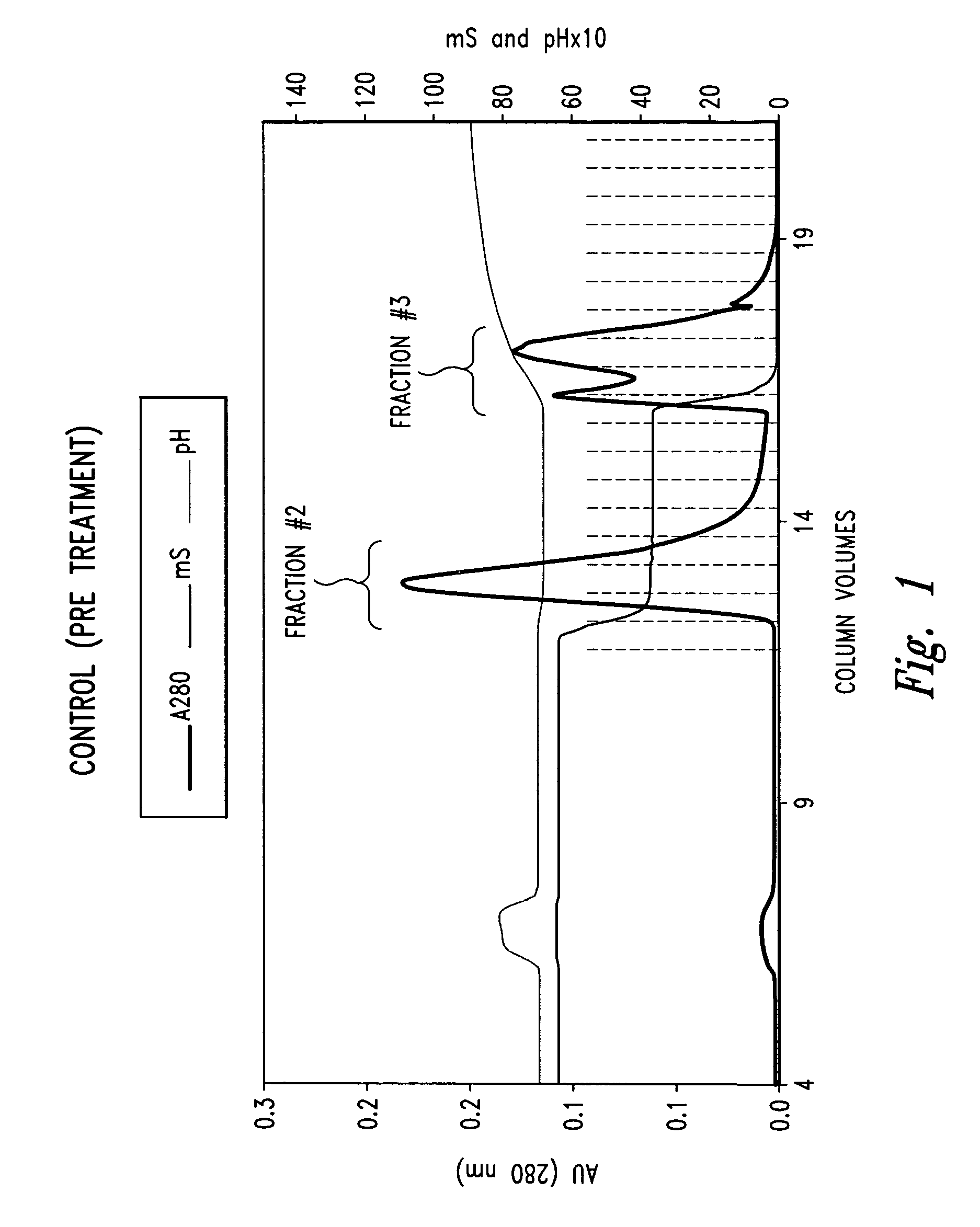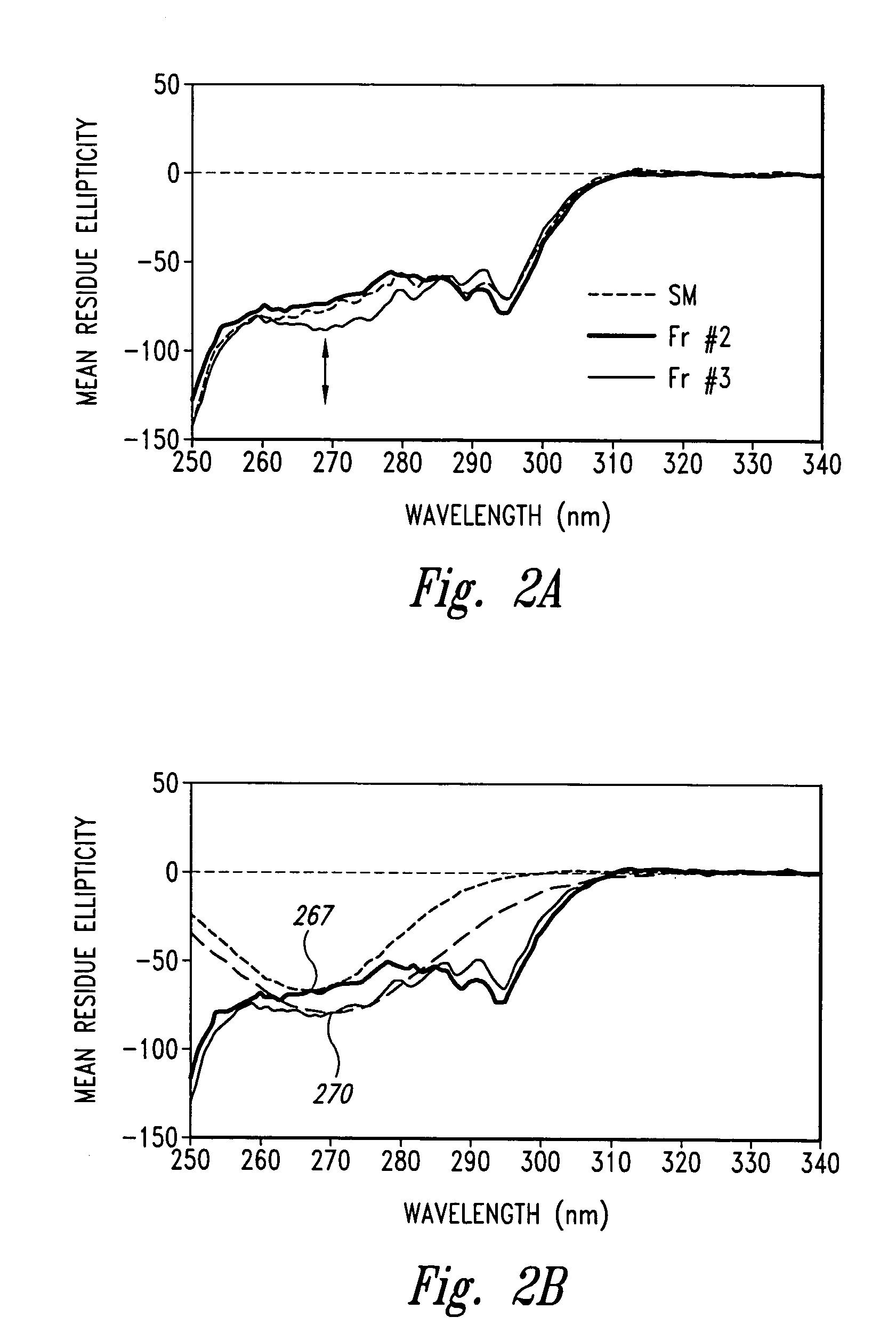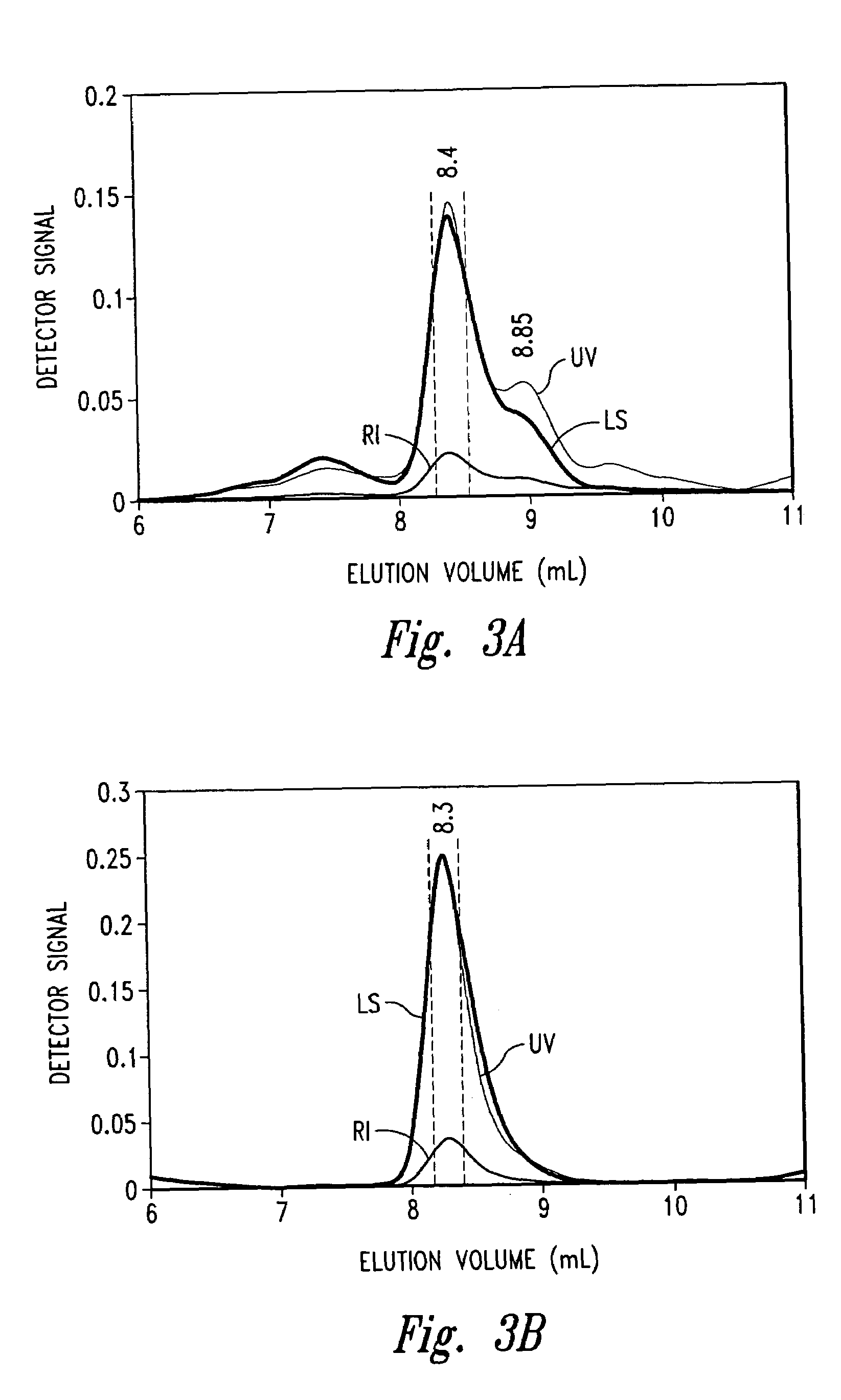Increased recovery of active proteins
a technology of active proteins and recovery, applied in the field of protein treatment and purification, to achieve the effect of increasing the relative proportion of the desired conformational isomer
- Summary
- Abstract
- Description
- Claims
- Application Information
AI Technical Summary
Benefits of technology
Problems solved by technology
Method used
Image
Examples
example 1
Biophysical Assessment of TNFR:Fc Fractions #2 and #3
[0054]The p75 TNFR:Fc elutes off a hydrophobic interaction column (HIC) as three distinct peaks termed Fraction #1, Fraction #2 and Fraction #3 (see FIG. 1). Fraction #2 is the desired fraction. Fraction #3 was of particular interest since it can comprise from 20 to 60% of the sample and has been shown to exhibit low TNF binding activity and A375 bioactivity in comparison with Fraction #2. Therefore, in the interest of understanding the differences between these two fractions and ascertaining what factors contribute to the loss in activity for Fraction #3 as it pertains to structure and conformation, biophysical studies were carried out. In this example, we analyzed Fraction #2 and Fraction #3 using Circular Dichroism, Fluorescence, on-line SEC / UV / LS / RI, and differential scanning calorimetry (DSC).
Materials and Methods
[0055]Materials: The starting material was TNFR:Fc in TMS buffer (10 mM Tris, 4% mannitol, 1% sucrose). HIC eluted...
example 2
Disulfide Exchange Experiments on TNFR:Fc Fraction #3 with Glutathione
[0069]This experiment was designed to assess a variety of treatments to drive TNRF:Fc Fraction #3 into the conformation of Fraction #2 in a process amenable to large-scale production runs.
Materials and Methods
[0070]Materials. The starting material was TNFR:Fc as a Protein A elute, a pure HIC elute of Fraction #3, and a 50:50 mixture of HIC elutes Fraction #2 and Fraction #3. Buffers were 0.1 M citrate or 0.1 M Tris / glycine at pH 7.6, pH 8.6 or pH 9.6. Protein concentration of the TNFR:Fc was from 0.2 to 4.5 mg / mL. A redox coupling system of reduced glutathione and glutathione (GSH / GSSG at a ratio of 10:1) was added at 0.1 to 5 mM GSH. Incubation temperature was varied at 4 degrees, 22 degrees or 31 degrees Centigrade.
[0071]Methods. Disulfide exchange was quenched by acidification of the sample to pH 6 with 1 M acetic acid. Treated preparations of recombinant protein were characterized by analytical HIC, SEC (reten...
example 3
Disulfide Exchange Experiments on TNFR:Fc Treated with L-Cysteine
[0078]This experiment was designed to assess cysteine / cystine as reduction / oxidation coupling reagents for TNFR:Fc. The procedure allows assessment of change of HIC Fraction #3 into the conformation of Fraction #2 in a process amenable to large-scale production runs. The procedure can be performed on a purified Fraction #3, a mixture of Fractions #2 and #3, and / or following other separation techniques such as Protein A chromatography, with similar results.
Materials and Methods
[0079]The starting material was TNFR:Fc as a pure HIC elute of Fraction #3 or as a Protein A-eluted TNFR:Fc containing both Fraction #2 and #3. Buffers were 0.1 M citrate or 0.2 M Tris at pH 8.5. Protein concentration of the TNFR:Fc was 2.5 to 3 mg / mL.
[0080]A redox coupling system of L-cysteine (varying from 0 to 50 mM) was utilized. The procedure was also assessed + / −L-cystine (0.025 to 0.5 mM) and + / −1 mM EDTA. Incubation temperature was assesse...
PUM
| Property | Measurement | Unit |
|---|---|---|
| concentration | aaaaa | aaaaa |
| Tm | aaaaa | aaaaa |
| Tm | aaaaa | aaaaa |
Abstract
Description
Claims
Application Information
 Login to View More
Login to View More - R&D
- Intellectual Property
- Life Sciences
- Materials
- Tech Scout
- Unparalleled Data Quality
- Higher Quality Content
- 60% Fewer Hallucinations
Browse by: Latest US Patents, China's latest patents, Technical Efficacy Thesaurus, Application Domain, Technology Topic, Popular Technical Reports.
© 2025 PatSnap. All rights reserved.Legal|Privacy policy|Modern Slavery Act Transparency Statement|Sitemap|About US| Contact US: help@patsnap.com



